It may seem like a pre-requisite to have huge hands to play guitar well. That is, fortunately, not the case. In fact, with the right technique, practice, and the right sized instrument, anyone can learn to play well, regardless of the size of their hands. Here are several options for the best guitar for small hands.

Often when you see famous guitarists they have pretty big hands. Jimi Hendrix's hands were reportedly 10 ¾ inches from the tip of his middle finger to his wrist.
So what do you do when you have average, or even smaller, sized hands? You do what every guitarist does; find the right instrument, find the right teacher, and practice.
The size of your hands dont have to hold you back in learning how to play guitar. Here are several guitars, both acoustic and electric, that are perfect for guitarists with smaller hands.
Here are the top 7 best guitars for small hands.
The Best Guitar For Small Hands
Electric Guitars
1. Squier by Fender Mini Strat Electric Guitar
2. Ibanez GRGM21BKN ¾ Size Mikro Electric Guitar
3. Epiphone SG Special VE Electric Guitar
4. Squier by Fender Bullet Mustang HH Short Scale Beginner Electric Guitar
Acoustic Guitars
5. Martin LX1 Little Martin Acoustic Guitar
6. Oscar Schmidt OG1FYS-A-U ¾ Size Dreadnought
7. Yamaha APXT2 ¾-Size Acoustic-Electric Guitar
Our Top Pick
Our top pick from this list is the Squier by Fender Mini Strat Electric Guitar. We chose this as our top pick because you just can't go wrong with a Strat. The construction and materials are solid and high quality. You can play any style, especially with the included amp and accessory package.
Best Guitars For Small Hands Review
Here are 7 of our favorite guitars that are perfect for small handed players.
Electric Guitars
1. Squier by Fender Mini Strat Electric Guitar

Description: This mini Fender Strat Pack by Squier is a banging deal for any guitarist, not just those with small hands. However, with a thin, "C" shaped neck and short scale length, it is perfect for short fingers and smaller grips.
The body of this guitar is solid poplar and gives off a warm tone that is synonymous with the Stratocaster. The Strat Pack also comes with a ton of extras like a strap, extra picks, online lessons, and a practice amp!
All in all, this is an awesome guitar and package for guitarists with small hands and is the top choice on this list.
Features: ¾ size body, 22.75" scale length, "c" shaped neck, 20 frets, 3 single-coil Strat pickups, 5-way switching for pickups, vintage-style Strat bridge, bundle (amp, tuner, strap, picks, 10 ft cable, online lessons, instructional DVD)
Dimensions/Weight: 39 x 15 x 4 inches; 13 lbs
Body Style: Stratocaster
Nut Width: 1.6"
Scale Length: 22.75"
Acoustic Top/Electric Body: Poplar
Pros:
- bundle comes with practice amp
- ¾ size is small and easy to handle
- short scale length is easier to play with small hands
Cons:
- reports that some accessories do not work properly
2. Ibanez GRGM21BKN ¾ Size Mikro Electric Guitar

Description: The sharktooth inlays alone should be enough to convince you that this guitar is the real deal. If they don't the dual humbucking pickups with their kickass rock tone surely will!
Typically, electric guitars are going to be better for small hands because they are smaller in size than an acoustic. This guitar has an undersized body and the scale length is just 22". That makes fretting this fingerboard a dream.
If you are an up and coming rock or metal guitarist, this is the guitar for you!
Features: 22" scale length, dual humbucker pickups, same set up standards as a higher priced Ibanez
Dimensions/Weight: 37 x 3 x 14 inches; 8.43 lbs
Body Style: RG
Nut Width: 1.71"
Scale Length: 22"
Acoustic Top/Electric Body: Mahogany
Pros:
- ¾ size is perfect for smaller frame bodies
- short scale length works well for small hands
- great sound and tone
Cons:
- reports of needing setup before it will hold tune
3. Epiphone SG Special VE Electric Guitar

Description: This Epiphone SG Special VE is a true recreation of a vintage SG. The poplar body gives off a beautifully balanced tone combined with rich harmonics. This sound is only improved through a pair of Ceramic-8 humbuckers.
The neck is made from okoume with a rosewood fretboard. This guitar's scale length is a little longer than the previous entries on this list; coming in at 24.75". But don't let that intimidate you. Again, electric guitars have thin necks that are pretty easy to grip.
Top this all of with a beautiful, vintage, worn finish and you have an axe to be proud of.
Features: 60s slim taper neck, open coil humbucker pickups w/ ceramic magnets, vintage worn finish, SG style LockTone Tune-o-matic bridge, Stopbar tailpiece, non-rotating ¼" output jack, die-cast 14:1 ratio machine heads
Dimensions/Weight: 44 x 17 x 8 inches; 8.36 lbs
Body Style: SG Cutaway
Nut Width: 1.69"
Scale Length: 24.75"
Acoustic Top/Electric Body: Mahogany
Pros:
- lightweight
- Gibson quality for less cost
Cons:
- frets may need to be filed down before playing
4. Squier by Fender Bullet Mustang HH Short Scale Beginner Electric Guitar

Description: The second Fender on this list but this time, it's the Squier Bullet Mustang HH Short Scale. This guitar is marketed toward beginners, because of it's short, 22.75" scale length. But it is a fun guitar no matter how long you've been playing.
You can get a ton of great sound out of this guitar with the dual humbucker setup. You also get 3-way switching to really explore the sonic landscape of your instrument.
As we mentioned, the scale length of the neck is 22.75". the neck is also pretty thin, with a 1 ⅝" nut width. You should have no problem playing this guitar regardless of your hand size.
Features: dual humbucking pickups, thin/lightweight body, sealed, die-cast tuning machines, online guitar lessons, 22.75" scale length
Dimensions/Weight: 44.4 x 14.8 x 4 inches; 9.11 lbs
Body Style: Fender Mustang
Nut Width: 1 ⅝"
Scale Length: 22.75"
Acoustic Top/Electric Body: Poplar
Pros:
- tone on par with high dollar instruments
- the unfinished neck feels great
Cons:
- frets may need to be filed down before playing
Acoustic Guitars
5. Martin LX1 Little Martin Acoustic Guitar

Description: If you want quality and great tone, then Martin is an excellent choice in acoustic guitars. And they are accommodating to those of us that may want a smaller guitar. That's where the Martin LX1 Little Martin Acoustic Guitar comes in.
The Sitka Spruce top combined with the Mahogany back and sides give off a warm, rich tone that is familiar to the Martin guitar. Because it is primarily designed to be a travel guitar, it is remarkably light and compact. Small handed players should have no trouble at all playing this guitar.
If you are looking for the best acoustic guitar for small hands, this is it!
Features: ¾ scale length acoustic, chrome tuners, Tusq saddle, padded gig bag included, 23" scale
Dimensions/Weight: 39 x 18 x 7 inches; 6 lbs
Body Style: Dreadnought
Nut Width: 1 11/16"
Scale Length: 23"
Acoustic Top/Electric Body: Sitka Spruce
Pros:
- loud for it's size
- pleasant tone
Cons:
- tone not as rich as a larger Martin guitar
6. Oscar Schmidt OG1FYS-A-U ¾ Size Dreadnought

Description: The Oscar Schmidt OG1FYS-A-U ¾ Size guitar is an immediate eye catcher. It's warm, rich finish is a bit more bright and orange in person.
The top is a high quality spruce. The back and sides are made of catalpa. Catalpa is similar to ash as a tonewood. The body should give you some bright tones and long sustain.
This guitar is actually a little bit smaller than the Little Martin above. The width of the neck at the nut is 1 9/16" and it has a 22.5" scale length. Add to that, it is incredibly lightweight and you have a great acoustic guitar for someone with small hands.
Features: select spruce top, catalpa sides and back, engineered wood fingerboard and bridge, chrome die-cast tuners,
Dimensions/Weight: 41 x 7.75 x 15.5 inches; 5 lbs
Body Style: Dreadnought
Nut Width: 1 9/16"
Scale Length: 22.5"
Acoustic Top/Electric Body: Spruce
Pros:
- well rounded sound
- nice, glossy finish
Cons:
- some reports of loose tuning pegs
7. Yamaha APXT2 ¾-Size Acoustic-Electric Guitar

Description: We've split this list into electric and acoustic guitars. The final entry is a combination of both. The Yamaha APXT2 ¾ Size Acoustic-Electric Guitar is a super lightweight, super thin bodied guitar.
You are going to get a great sounding tone out of the Spruce soundboard. The back and sides are made of meranti, which is similar in tonewood as Mahogany.
The neck is only 1 ⅝" wide at the nut and has a scale length of just 23". You will have no problem fretting up and down the rosewood fingerboard. The onboard electronics feature a System 68 pickup with both volume and tone control.
As an added bonus, this guitar also has a built-in tuner so you can always be in tune. You also get a gig bag to go along with it.
Features: spruce top, meranti back and sides, rosewood fingerboard and bridge, System 68 pickup, comes with gigbag, ¾ length, thin-line body
Dimensions/Weight: 36.22 x 16.46 x 4.53 inches; 5.29 lbs
Nut Width: 1 ⅝"
Scale Length: 23"
Acoustic Top/Electric Body: Spruce
Pros:
- thin-line body makes it easier for smaller hands to grip around the guitar
- good for beginners
Cons:
- reports of lower quality tuners
How To Pick Out A Guitar When You Have Small Hands
Honestly, to pick a guitar for small hands, you will still want to consider a lot of the things any other guitarist would look for; soundboard material, quality of build, price, etc. However, there are a few other things that you may want to consider specifically to accommodate small handed players.
Body Size
This is not referring to your body size but the size of the guitar. Many acoustic guitars have wide and thick bodies. If you have small hands and/or a small frame, this can make it difficult to navigate around the instrument and get a good grip on the neck.
To avoid that situation you may want to look for acoustic guitars with a thinner body depth or an electric guitar. Most electric guitars are going to be just a few inches thick.
Neck
Even though the body is the largest part of the guitar, the neck probably plays the most important role in whether your instrument is good for small hands.
Width
You will want to look at the width of the guitar neck. Most electric guitars have thin necks; around 1.7 inches with acoustics close behind at 1.72. Classical guitars usually have wider necks in the 2 inch range.
The thinner the neck, the easier it is to play and move around the fretboard. As you can see in the list above, the width is typically measured at the nut. It will gradually increase in width as you move closer to the guitar's body.
Shape
Guitars usually come in one of three different neck shapes; "U" shaped, "V" shaped, and "C" shaped. The "C" shaped neck is the most comfortable neck for small handed guitarists. It is less thick between the fretboard and the back of the neck so it is easier to play individual notes quickly and wrap your hands around to fret chords.
Scale Length
The scale length of a guitar is the distance from the nut to the saddle. The shorter the scale length, the closer the frets will be together. The closer together the frets are, the less stretching you will need to do to make chord shapes.
Most of the guitars that we feature above run their scale length in the 22" to 24" range. Most often these guitars are referred to as ¾ length, although, there are full sized guitars in the 24" range.
String Type and Gauge
The final piece to examine when picking out your guitar is what type of strings you want to use. The material of the string can make them easier or harder to fret. However, this is something that can be overcome with practice and exercises anyway.
If you are playing an electric guitar, you can really only choose steel strings. In this case, you will want to play around with some lighter string gauges to see which ones work best for you and your playing style.
Heavier gauge strings will be thicker and more difficult to fret. Lighter gauge will be easier, but do not carry the same lower tones you may want to hear.
Go to your local guitar shop and play around with different gauges to see what sounds best and feels best to you.
Common Questions
Here are some of the more common questions asked about playing guitar with small hands.
Should I Buy A Mini Electric Guitar?
Mini electrics are a great option for smaller hands. The electric guitar already has a thinner neck than an acoustic. A mini electric will just be a little more comfortable.
In fact, our top pick from this list is the Squier Mini Strat.
Should I Buy A ¾ Guitar?
¾ length guitars are excellent instruments if you have small hands. They were initially designed for children to learn to play, but have been adopted by players of all skill levels (and hand sizes, for that matter).
How To Play Guitar When You Have Small Hands
Like we said above, the size of your hands should not limit how skilled you can become as a guitarist. Sure, someone with huge hands may start out with an advantage but what truly determines a musician is their dedication to their craft.
With that being said, aside from the normal routine of practice, there are some additional steps you can take to improve your abilities.
Exercises
You will want to make sure you are working on your scale exercises, specifically exercises that require you to make big stretches. Just like exercising your body, the more you exercise, the looser and more limber you become.
Regular stretching and exercise will make those harder to reach frets feel closer and those difficult barre chords a lot less cumbersome.
Additionally, you can get a grip strengthener to use when you're not playing. This will help you improve your grip strength and finger dexterity. If barre chords are giving you a lot of trouble, you can also use a capo.
Why is my action so high (and other uncomfortable issues)?
With many smaller guitars, they are often marketed for a beginner. Because of this, they are usually lower priced and are considered more budget guitars. If you read negative reviews about them, you will often see complaints about the action being too high, annoying fret buzz, not holding tuning, etc.
These reviews are almost always written by someone who is not quite familiar with how to set up a guitar. Most of these issues can be remedied pretty easily with some adjustments to the bridge and/or truss rod. If you are not comfortable attempting guitar setup yourself, just about any music store will have someone who can do it for you.
Overall Top choice
Again, our top pick for best guitar for small hands is the Squier by Fender Mini Strat Electric Guitar. The Squier line by Fender has consistently proven to put out quality guitar after quality guitar. This mini Strat is no different.
The Strat is an iconic instrument and you will feel great playing any style you choose on it. You also get a pretty decent accessory pack including a practice amp.
Conclusion
By this point you should be convinced that, not only, can you play guitar with small hands but there are also many options for you to choose from. Pick out a guitar from above and get to jamming!







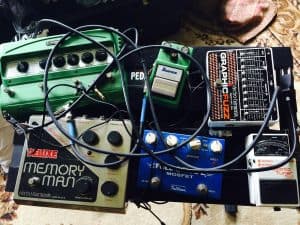
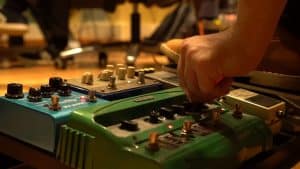
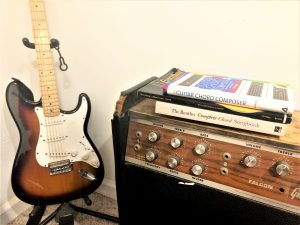

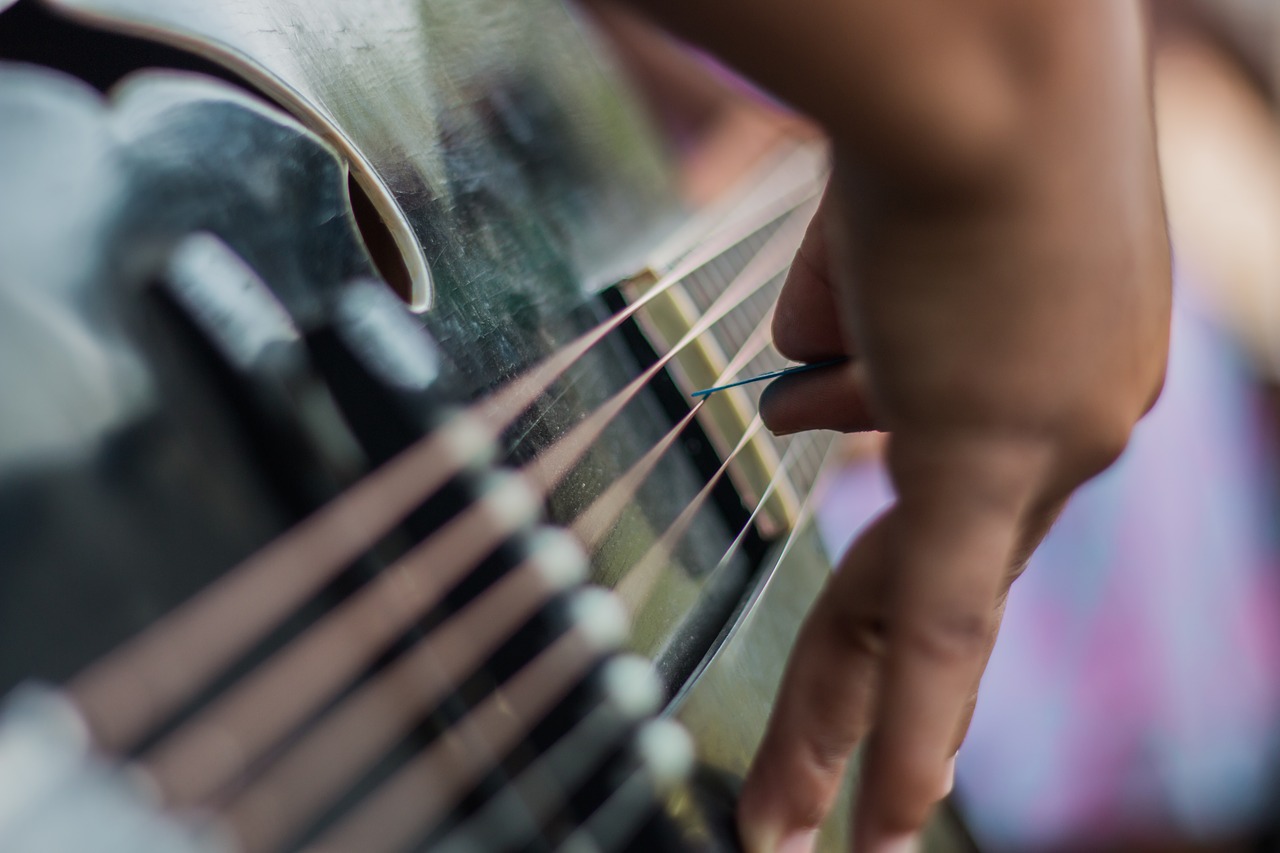
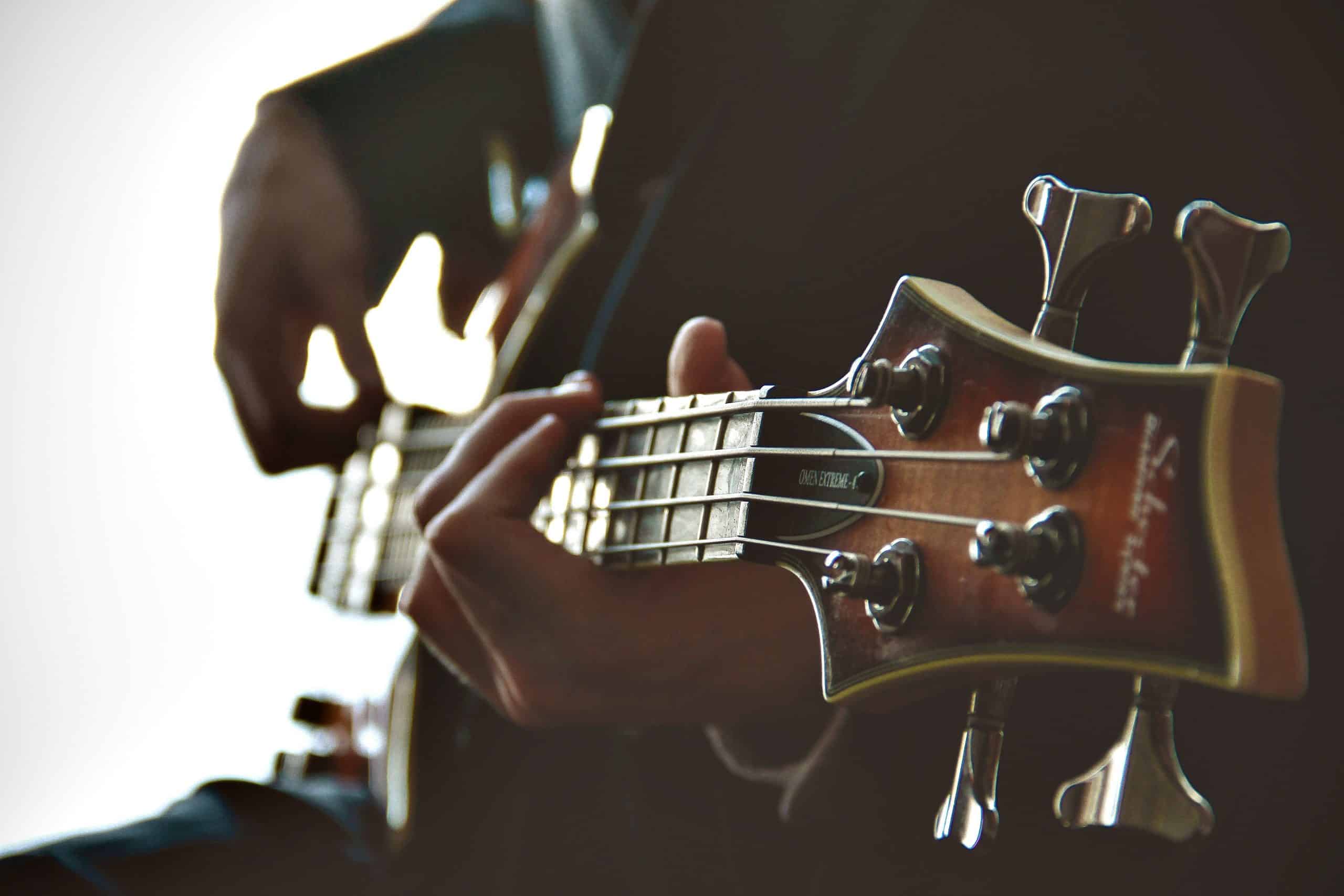
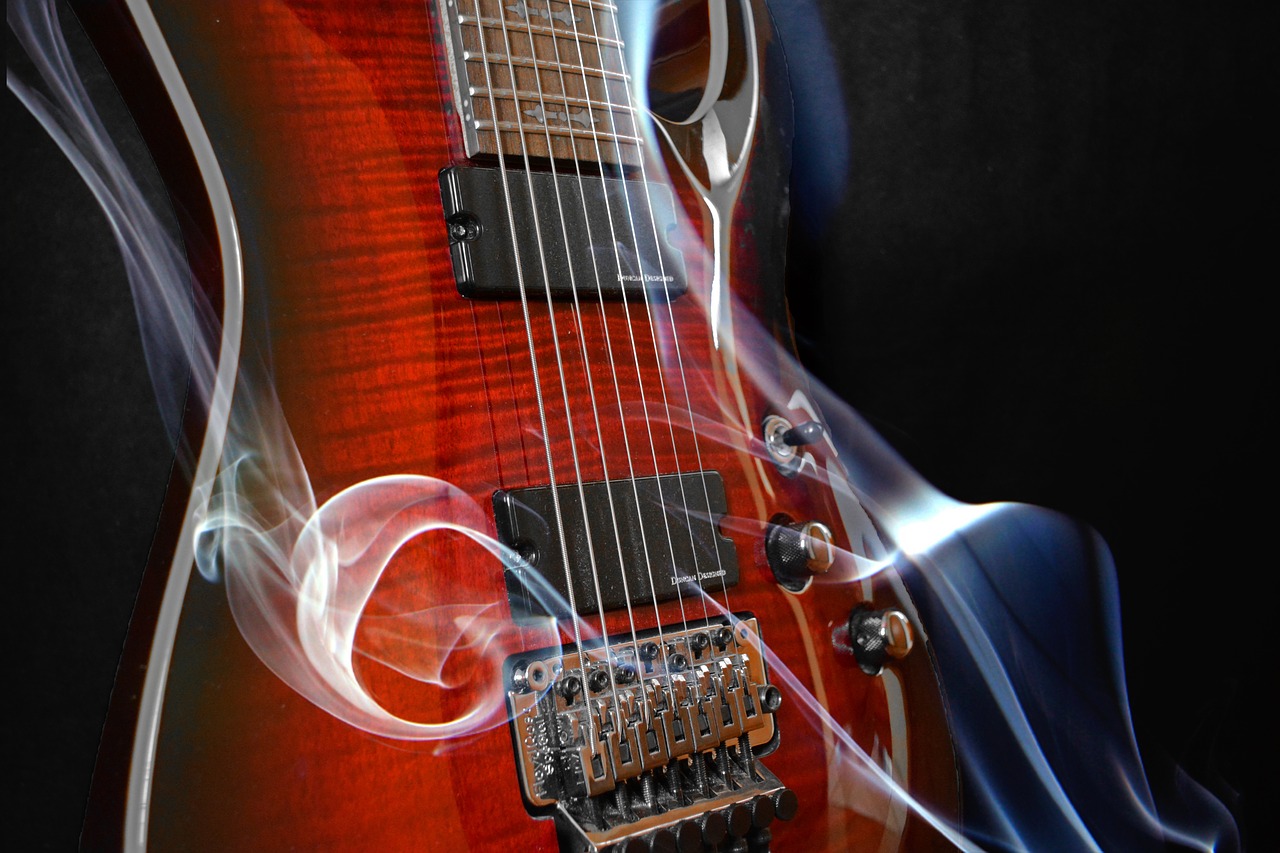

Leave a Reply